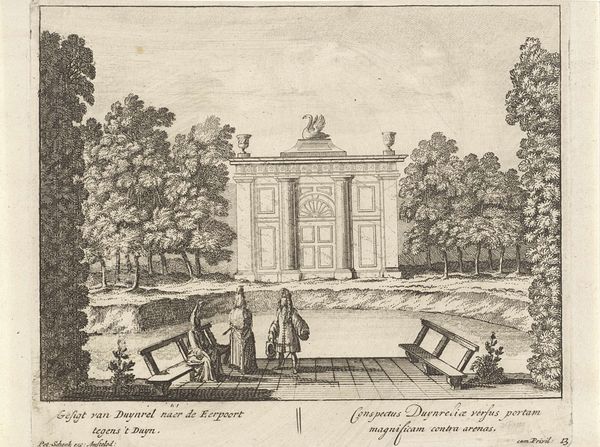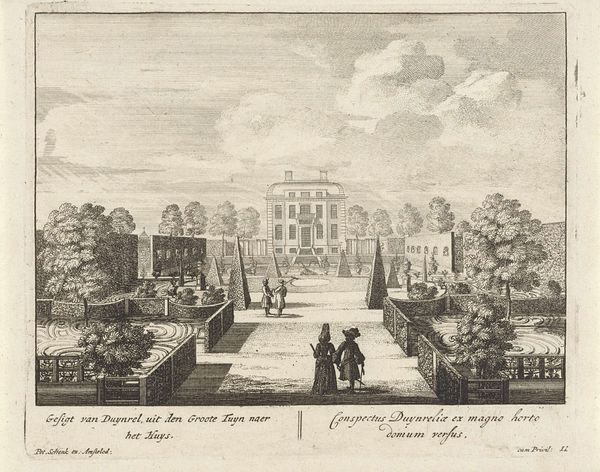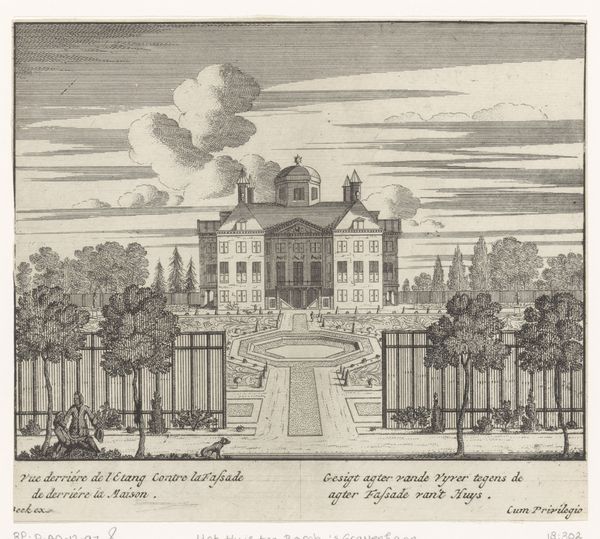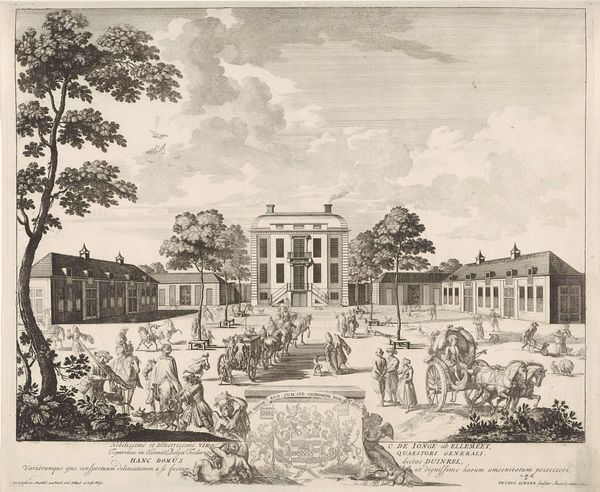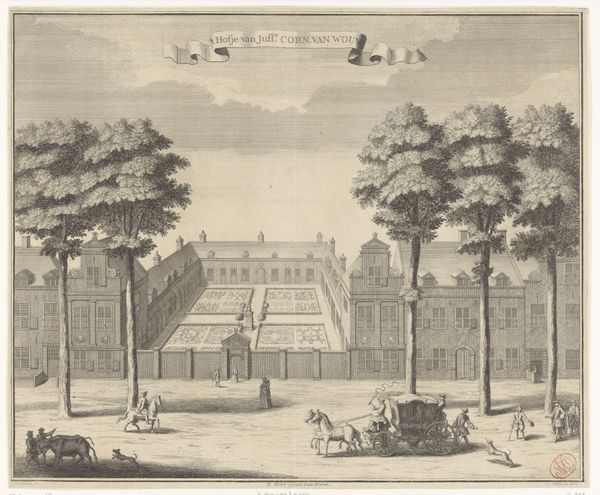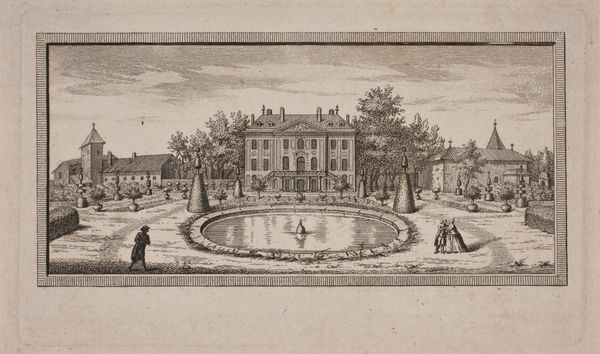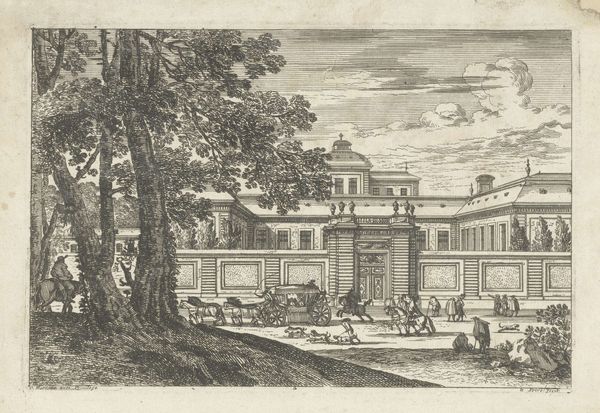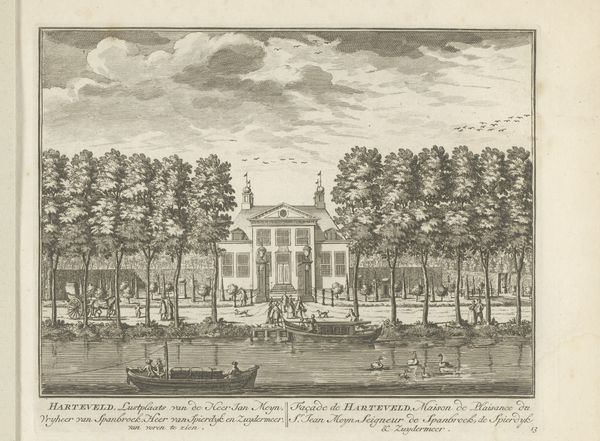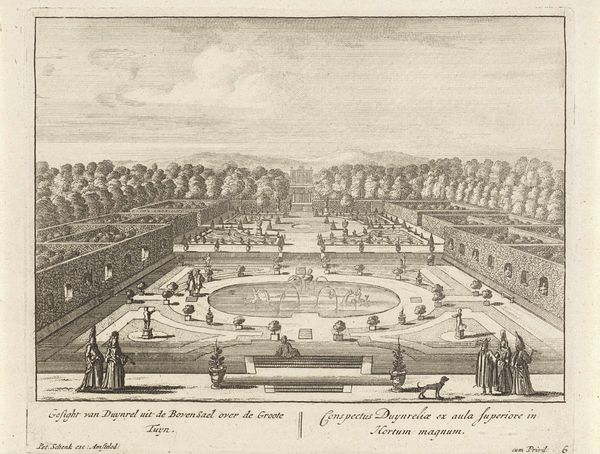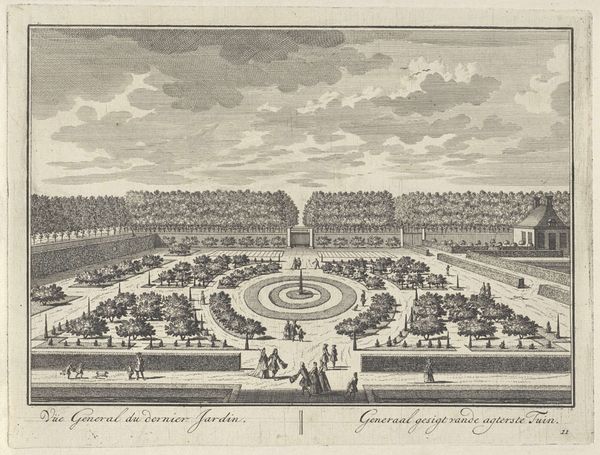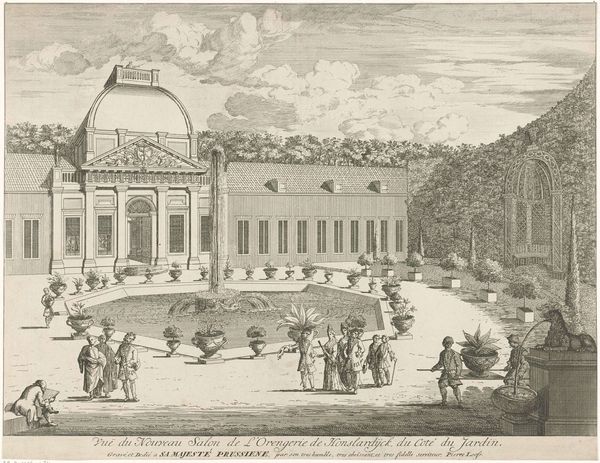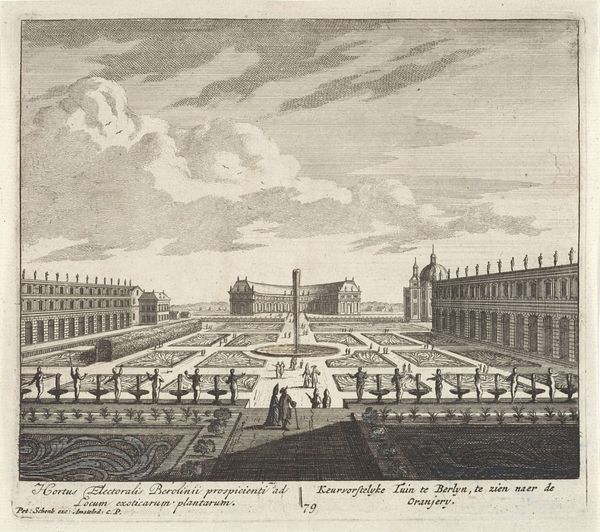
Gezicht op het huis van buitenplaats Duinrell, gezien vanuit de tuin 1675 - 1711
0:00
0:00
print, engraving, architecture
#
baroque
#
dutch-golden-age
# print
#
landscape
#
cityscape
#
engraving
#
architecture
Dimensions: height 171 mm, width 199 mm
Copyright: Rijks Museum: Open Domain
Curator: Let's turn our attention to this print, “Gezicht op het huis van buitenplaats Duinrell, gezien vanuit de tuin,” dating roughly from 1675 to 1711. Editor: Immediately, I'm struck by the rigid order of the composition, particularly the imposing symmetry that frames what appears to be the Duinrell estate. Curator: Indeed. Consider the societal context of Dutch Golden Age landscape prints like these. They frequently showcase not only wealth but also the mastery of nature through carefully controlled gardens. The symmetry symbolizes this control. We must also question who such representations were intended to serve and the statement that the landed gentry wished to convey about themselves. Editor: Absolutely. Visually, fountains here feel significant. They're populated by figures that call forth classical motifs and seem meant to resonate as powerful symbols, echoing enduring concepts of grace and abundance within a structured order. Do you think these references would have been legible for many viewers? Curator: The symbols and the way in which the architecture of the scene reinforces itself is a very common form of propaganda that only a small class would understand. Such prints acted as powerful, visual reinforcement of hierarchical systems. Editor: Yes, and you can really feel it in this engraving. Look at the clean lines that define the building and how they juxtapose with those fantastical mythological figures who inhabit the space in the fountain—it underscores a sense of privilege and ownership that, on reflection, might be discomforting for us now. Curator: Reflecting upon that historical power dynamic allows us to ask how such visuals might reinforce then current social orders. Considering feminist theory, one might analyse whether such artworks inadvertently reveal limitations imposed by wealth and rigid social structures. Editor: Understanding symbols requires sensitivity, doesn’t it? This piece reminds us to not simply accept, but actively interpret, what those in past societies aimed to preserve and transmit across generations. Curator: Exactly. By looking through a lens that focuses on race, gender and class, we are given additional ways to interrogate not only this picture, but the world in which it existed.
Comments
No comments
Be the first to comment and join the conversation on the ultimate creative platform.
